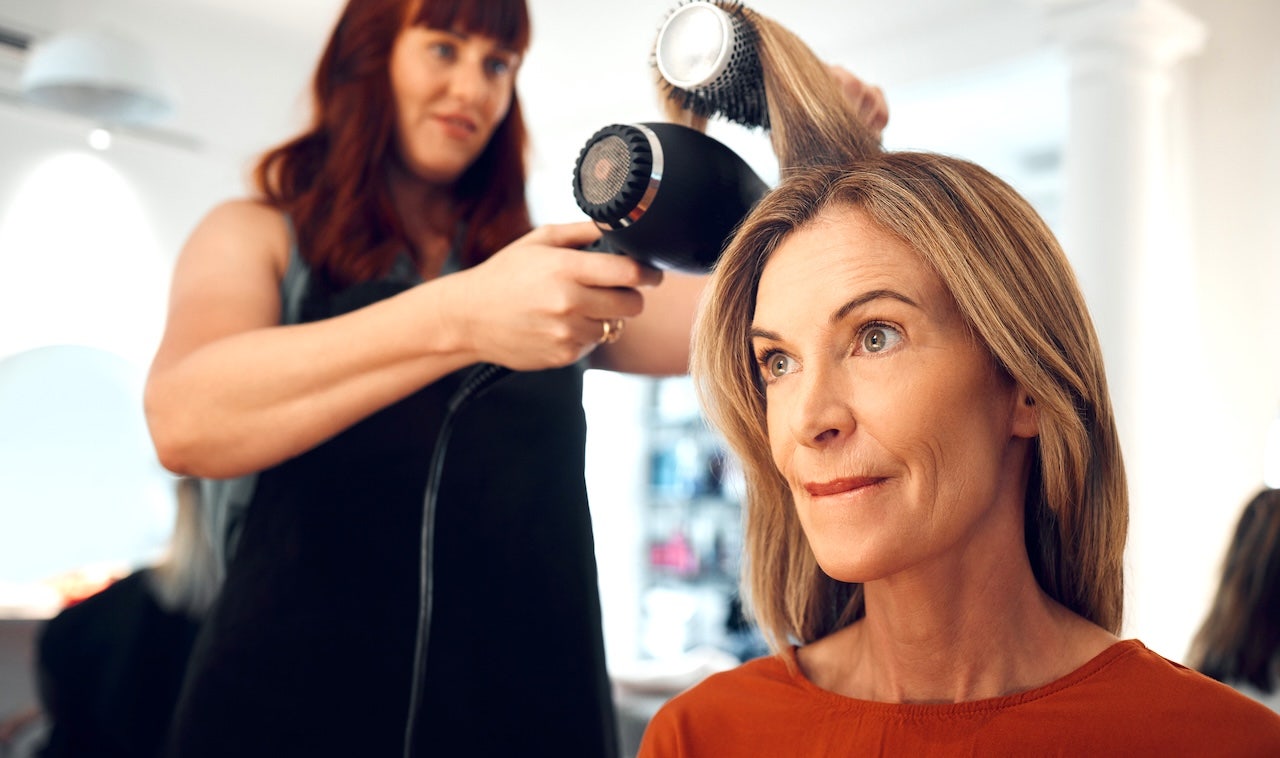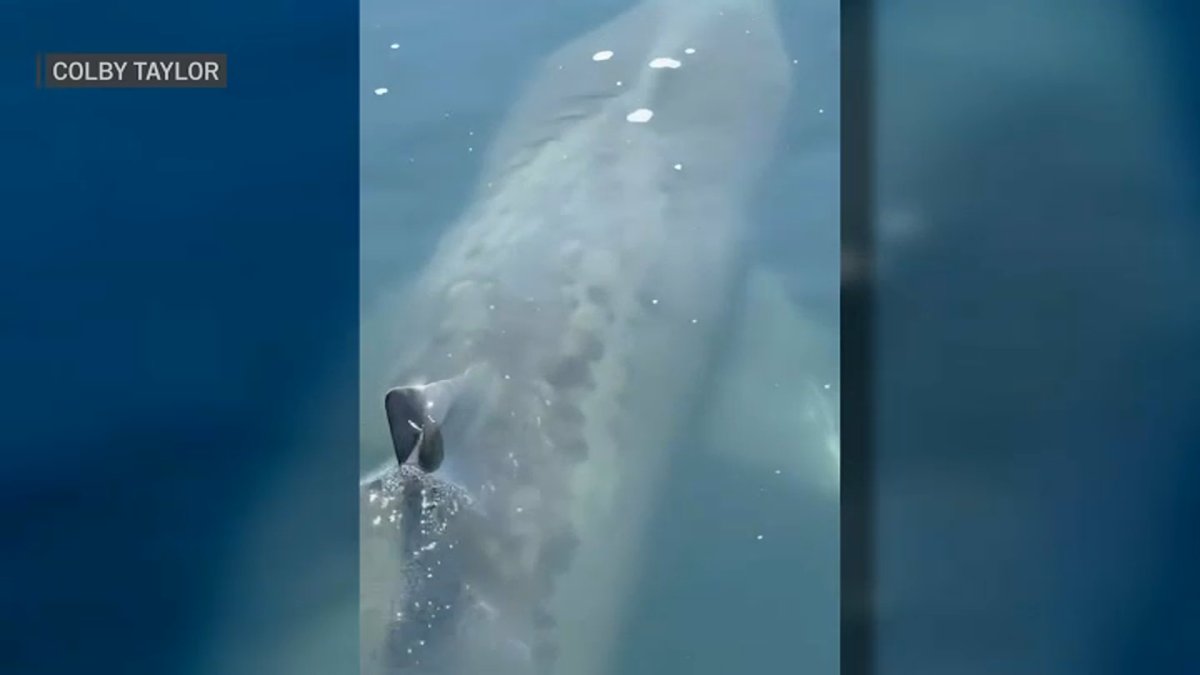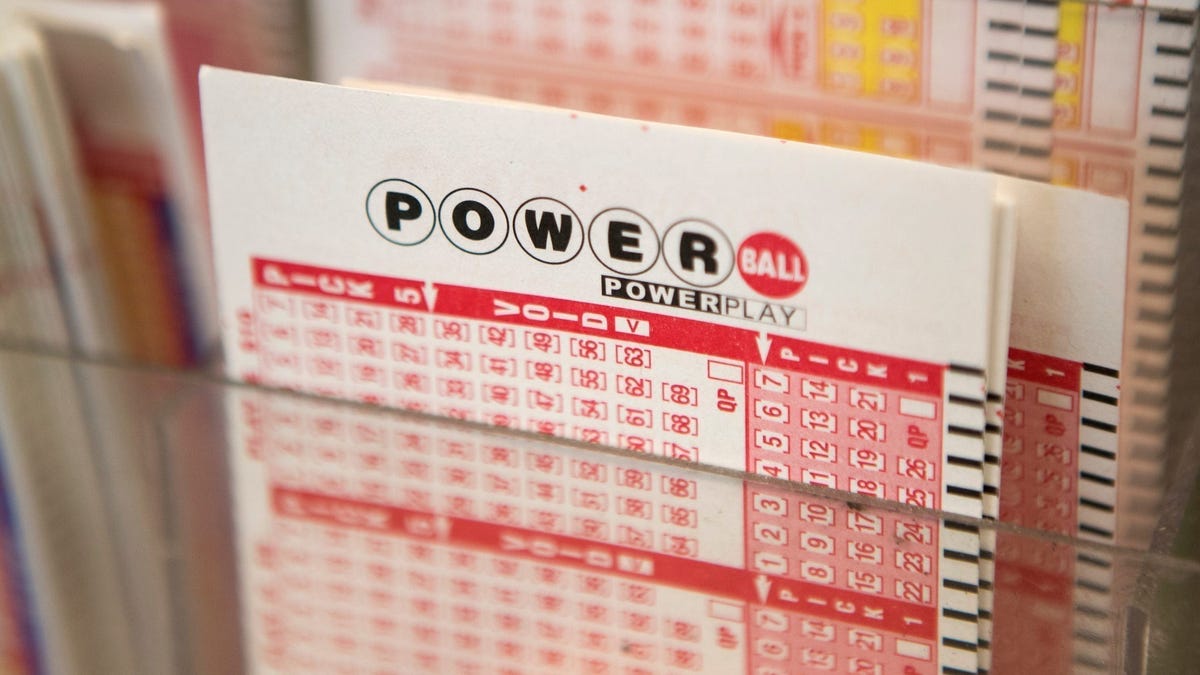Tesla finally did the damn thing. The company launched its hotly anticipated robotaxi service in Austin, Texas, on Sunday, June 22nd — and we’re now starting to see some of the first reactions roll in.
Technology
Roblox is making changes for pre-teen users after reports that it failed to protect children
/cdn.vox-cdn.com/uploads/chorus_asset/file/24785213/STK146_Roblox_New.jpg)
New parental controls and insights are coming soon
Dear parent,
We’ve been working on a series of important changes that we’ll be making to your child’s account, ____________, next month.
About Roblox accounts with parent privileges
Next month, we’re changing the way parents manage their child’s experience on Roblox by introducing Roblox accounts with parent privileges. After linking your account to your child’s, parents can view and update parental controls for their child all from their own device. Parents also get access to insights about their child’s Roblox usage, such as their daily screen time and on-platform friends.
Given these changes, starting next month, parents will no longer be able to set a parent PIN, use Account Restrictions, or receive account-related notifications to their parental email. Instead, you will need to use an account with parent privileges. Existing verified parental emails on child accounts will continue to be used for account recovery. Any settings previously set using a parent PIN will not change, but you will need an account with parent privileges to make updates going forward.
As always, if users are interested in an added layer of security on their account, you can set up 2-factor authentication.
Updated content maturity settings
As we shared with the community in July, to help provide parents and users more clarity into the types of content available on Roblox, we’ll soon begin labeling experiences based on the type of content users can expect in an experience, rather than by age. Experience Guidelines will be renamed Content Labels, and you’ll be able to set limits on the type of content accessible to your child through the content maturity setting in parental controls.
New default settings for users under the age of 13
As part of Roblox’s commitment to safety, we are also updating certain default settings for our youngest users. Starting next month, users under the age of 13 will need parent permission to access certain chat features. Users under the age of 9 will also need parent permission to access experiences with content maturity “Moderate,” which may contain things like moderate violence or moderate crude humor.
Your child’s settings will be updated when they reach certain ages, if you and your child haven’t previously made changes to them. You and your child will be notified of these updates in advance.
We will share more information on these setting updates when the changes go into effect next month.
Next steps
To continue receiving notifications about your child’s account related to spending or other important activity, you’ll need to set up a Roblox account with parent privileges and link to your child’s account. When these changes take effect, your child will receive a notification inviting them to add a linked parent account, and we’ll send you an email with instructions.
Since day one, Roblox has been committed to building safety features and tools into the design of our products. We will always continue to explore different ways to update our parental controls to make them even more useful for parents.
Roblox

Technology
Samsung confirms Unpacked for early July

Samsung’s summer Unpacked is officially on, starting at 10AM ET on Wednesday, July 9th. The invitation features a jazzy little bop and the words “Ultra Unfolds,” so I think it’s safe to assume we’re getting that foldable Ultra phone the company previously hinted at.
The invitation seems to suggest a thinner device, or at least that’s how I’m reading it. That would line up with some of the rumors, and super-thin foldables has certainly been a trend so far this year. I’ve wedged plenty of chunky foldables into the side pocket of my yoga pants, so I for one would welcome this development.
Per usual, Samsung is offering a little incentive to reserve a device for pre-order ahead of the big reveal: $50 in credit to use at Samsung.com. That’ll cover a chunk of the cost of a case for a foldable phone, which run between $85 and $100 for the Galaxy Z Fold 6 on Samsung’s website right now. If the Ultra comes with an Ultra price tag, it might be worth shelling out a little more to protect it from the wear and tear of daily use. Just a little free advice.
Technology
Top 5 scams spreading right now

NEWYou can now listen to Fox News articles!
Lately, I’ve had way too many calls on my shows from people who have lost thousands (sometimes hundreds of thousands) to scams. These are so cleverly evil, it’s like Ocean’s Eleven but starring a dude with three Instagram followers and a ChatGPT subscription.
Last chance to enter to win $500 in giveaway. Enter now!
You see, we’re way past scam emails from sketchy Nigerian princes. Today’s scams are slick, personalized and powered by scary-good tech like AI voice cloning and deepfakes. And yep, people fall for them every single day.
DON’T SCAM YOURSELF WITH THE TRICKS HACKERS DON’T WANT ME TO SHARE
Here are today’s scummy front-runners, plus how to protect your cash, pride and sanity:
Scam calls – employing things like AI voice clones – are becoming all too common these days. (Thomas Trutschel/Photothek via Getty Images)
1. The AI voice clone
This one’s horrifying because it sounds like someone you trust. Scammers grab a clip of your child’s, spouse’s, boss’ voice from social media, podcasts or even your voicemail.
Then they call your mom, your grandpa, your partner: “Hi, it’s me. I’m in big trouble. I need money. Don’t tell anyone.” It’s not them. It’s AI. And it works because it feels real.
Anthony in Los Angeles was deceived by scammers who used AI to replicate his son’s voice. Believing his son was in distress, Anthony transferred $25,000 to the fraudsters.
If you get a call like this, call or text the person. Try someone they live or work with.
IF YOU DON’T KNOW ABOUT THESE VIDEO TOOLS, YOU’RE ALREADY BEHIND
2. ‘Your bank account’s frozen’
You get a text or call from your “bank,” and the number looks legit. They say your account is locked due to suspicious activity and you need to confirm your info.
Stop right there. That link? Fake. The person on the phone? Also fake.
Charles in Iowa lost over $300,000. Always open your bank’s app or type the web address in yourself. Never tap the link they send.

Phony claims of frozen bank accounts and crypto-crazy online “friends” are other ways scammers have found to cause financial grief. (iStock)
3. Crypto investment ‘friend’
This starts on Instagram, Facebook or LinkedIn. Someone friends you, chats you up, gains your trust, then casually mentions they’re making a fortune in crypto.
They even offer to show you how. Suddenly you’re handing over money or access to a wallet, and poof, it’s gone. A couple in Georgia lost $800,000 after falling victim to a cryptocurrency scam. Just because someone’s friendly doesn’t mean they’re honest.
Don’t fall for a stranger friending you on social media. If you’re lonely, volunteer somewhere.
THE $40K SCAM THAT ALMOST GOT ME + 3 MORE SPREADING NOW
4. Gold bar scam
You get a call from someone claiming to be with the FBI or your bank’s fraud team. They say your money’s at risk, and you need to withdraw it, convert it into gold bars and turn it over for “safekeeping.”
A 72-year-old retiree from New Hampshire was scammed into purchasing $3.1 million worth of gold bars and turned it over to the scammer. Yes, it sounds insane, but it’s happening, and people are losing everything. Come on, you know that real law enforcement doesn’t operate this way.

Calls claiming you need to convert money to gold are an out-there, but real, threat. (JUNG YEON-JE/AFP via Getty Images)
5. Vet emergency
A neighbor’s crying. Your dog’s been hit by a car. They rushed your fur baby to the vet and paid the bill. You owe them $1,200. But wait … your pup is fine, snoring on the couch.
You’ve been pet-shamed into Venmoing a scammer.
If any of this sounds familiar, your gut is whispering danger or you’re not sure what might be happening in a situation, reach out to me. I’ll help you figure out what’s real and what’s a scam. Better to ask than get burned. I won’t judge you, I promise.
Get tech-smarter on your schedule
Award-winning host Kim Komando is your secret weapon for navigating tech.
Copyright 2025, WestStar Multimedia Entertainment. All rights reserved.
Technology
Tesla’s robotaxi is live: here are some of the first reactions

But first, we have to get a few important caveats out of the way. Tellingly, the service is not open to the general public, nor is it completely “unsupervised,” as Elon Musk once promised. The vehicles will include Tesla-employed “safety monitors” in the front passenger seat who can react to a dangerous situation by hitting a kill switch. Other autonomous vehicle operators would place safety monitors in the driver or passenger seats, but typically only during the testing phase. Tesla is unique in its use of safety monitors during commercial service.
The rides are limited to a geofenced area of the city that has been thoroughly mapped by the company. And in some cases, Tesla is using chase cars and remote drivers as additional backup. (Some vehicles have been spotted without chase vehicles.)
The service is invite only at launch, according to Tesla’s website. A number of pro-Tesla influencers have received invites, which should raise questions about how unbiased these first critical reactions will be. Tesla hasn’t said when the service will be available to the general public.
The limited trial includes 10-20 Model Y vehicles with “Robotaxi” branding on the side. The fully autonomous Cybercab that was first revealed last year won’t be available until 2026 at the earliest. The service operates in a small, relatively safe area of Austin from 6AM to 12AM, avoiding bad weather, highways, airports, and complex intersections.
Despite those hours, the robotaxi service seems to have gotten off to a slow start. Several invitees had yet to receive the robotaxi app by 1PM ET on Sunday. Sawyer Merritt, who posts pro-Tesla content on X, said he saw 30 Waymo vehicles go by while waiting for Tesla’s robotaxi service to start. Musk posted at 1:12PM that the service would be available later that afternoon, adding that initial customers would pay a “flat fee” of $4.20 for rides — a weed joke with which Musk has a troubled history.
While riders waited, the company published a new robotaxi page to its website detailing a lot of the rules and guidelines of the service. Visitors are invited to sign up for updates about when Tesla’s robotaxi service may come to their area. (Musk has said there could be up to a thousand robotaxis on the road “in a few months.”)
After finally being granted access to the app, Merritt posted an image of the service area map, which appeared to cover a small area bordered by the Colorado River to the north, Highway 183 to the east, Highways 290 and 71 to the south, and Zilker Part to the west.
And then the rides began — and they appeared to be mostly uneventful. Several invitees livestreamed themselves summoning their first cars, interacting with the UI, and then arriving at their destination. Several videos lasted hours, as the invitees would conclude a trip and then hail another car immediately after. One tester, Bearded Tesla Guy, described the app’s interface as “basically Uber.” Many had some difficulty finding the pickup location of their waiting Tesla robotaxi.
“This is like Pokemon hunting,” one person on Herbert Ong’s livestream said, “but its robotaxi hunting.”
Once inside, the Tesla-employed safety monitor would ask the riders to show their robotaxi apps to prove their identities. Otherwise the safety monitors kept silent throughout the ride, despite riders trying to get them to talk. I’m assuming that Tesla will need to come up with some other way to identify their riders if they plan on removing the safety monitors from the passenger seat. Waymo, for example, asks customers to unlock their vehicle through the ridehail app.
The rear screen instructs the riders to fasten their seatbelts, and after pressing an animated “start ride” button, the vehicle gets underway. Riders can also start the ride from a similar button in the app. Since riders are registering for the robotaxi app using their preexisting Tesla profiles, they’re greeted with their preferred music apps on the rear screen with all their playlists and saved tracks.
The front display shows a visualization similar to consumer vehicles using Tesla’s Full Self-Driving feature — even though Musk had said the robotaxis are running on a special version of FSD that’s not available to the average Tesla owner. There are “pull over,” “stop in lane,” or “support” buttons on the center display. Another tester, Chuck Cook, said the visualization lacked some of the controls that a normal Tesla might have.
Pressing the support button places the rider in a queue as they wait for the remote operator to connect. On Cook’s livestream, it took approximately two minutes before an operator finally connected. “We appreciate you calling in,” the operator said (though the cellular connection was poor). “We’re here for any issues to support your ride.”
Throughout the various trips, the robotaxis encountered a bevy of normal situations, like U-turns, speed bumps, pedestrians, construction, and more. The vehicles maintained speeds of about 40 mph or slower. Common words to describe the ride was “smooth,” “great,” and “normal.” One tester said on X that they got the robotaxi to “mess up” in a way that required the remote operator to help out — though they declined to describe it as a disengagement.
Ashok Elluswamy, the head of the company’s self-driving team, posted a photo of several dozen people in a room with 10 large monitors on the wall showing live camera feeds from several vehicles. “Robotaxi launch party,” Elluswamy wrote.
Where Tesla goes from here is the real challenge. Musk has said he also wants to launch a robotaxi service in California, where the regulatory process is a lot more complex than Texas. And even though he has said he wants to take things slow, he also claims that Tesla will have over a thousand driverless vehicles on the road “within a few months.”
Meanwhile, Waymo is operating more than 1,500 driverless vehicles in San Francisco, Los Angeles, Phoenix, and Austin — with plans to expand to Atlanta, Miami, and Washington, DC in the near future. The Alphabet-owned company has said it will grow its fleet to 2,000 vehicles by next year.
-

 Arizona5 days ago
Arizona5 days agoSuspect in Arizona Rangers' death killed by Missouri troopers
-

 News1 week ago
News1 week agoAt Least 4 Dead and 4 Missing in West Virginia Flash Flooding
-

 Movie Reviews1 week ago
Movie Reviews1 week agoTitan: The OceanGate Disaster Movie Review: A sobering deep dive into ambition, negligence, and tragedy
-

 News1 week ago
News1 week ago‘No Kings’ demonstrators to gather across Greater Cincinnati in opposition to Trump
-

 News1 week ago
News1 week agoOakland County sheriff urging vigilance after shootings of 2 Minnesota lawmakers
-

 Health1 week ago
Health1 week agoHairstylists and medical expert confirm temporary hair loss affecting Ozempic users
-

 Culture1 week ago
Culture1 week agoBook Review: “The Möbius Book, by Catherine Lacey
-

 Technology1 week ago
Technology1 week agoInside Mark Zuckerberg’s AI hiring spree














